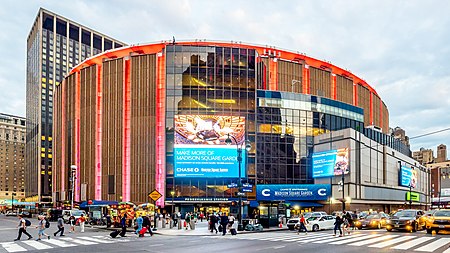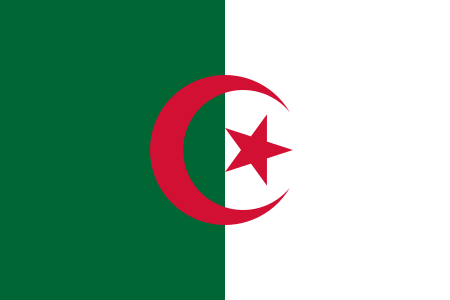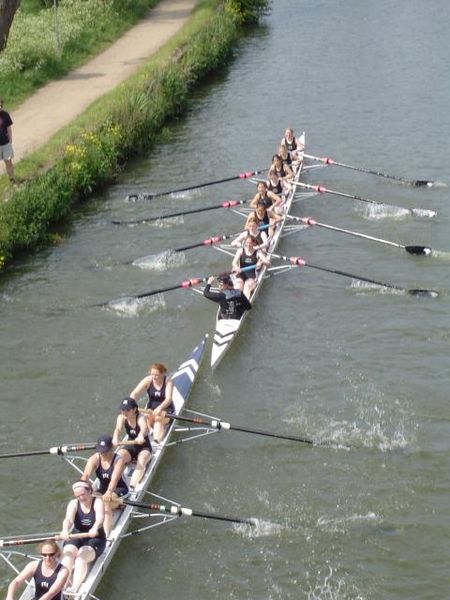Cyril Stanley Smith
| |||||||||||||||||||||||
Read other articles:

Swedish Football 1924–25 Allsvenskan (Tier 1) Division 2 (Tier 2) Division 3 (Tier 3) The 1924–25 season in Swedish football, starting August 1924 and ending July 1925: Honours Official titles Title Team Reason 1924 Swedish Champions Fässbergs IF Winners of Svenska Mästerskapet Competitions Level Competition Team 1st level Allsvenskan 1924–25 GAIS 2nd level Division 2 Uppsvenska Serien 1924–25 Brynäs IF Division 2 Mellansvenska Serien 1924–25 IK City Division 2 Östsvenska Serien 19…

منتخب بولندا لاتحاد الرغبي اللقب (بالبولندية: Biało-czerwoni) بلد الرياضة بولندا تاريخ التأسيس 24 أبريل 1958 الموقع الرسمي الموقع الرسمي[1] أكبر فوز أكبر خسارة تعديل مصدري - تعديل منتخب بولندا الوطني لاتحاد الرغبي (بالبولندية: Reprezentacja Polski w rugby) هو المنتخب الرياض…

Iakob NikoladzeLahir28 Mei [K.J. 16 Mei], 1876Meninggal10 Maret 1951Dikenal atasPemahat Iakob Nikoladze (იაკობ ნიკოლაძე; 28 Mei [K.J. 16 Mei], 1876 – 10 Maret 1951) adalah seorang pemahat dan seniman asal Georgia. Museum Nasional georgia, Museum Rumah Iakob Nikoladze didedikasikan untuk karya-karyanya dan didirikan setelah kematiannya di studio rumahnya di kota asalnya Kutaisi. Museum tersebut berisi pahatan, sketsa, foto dan dokumenter. Ia juga meranc…

Basketball Bundesliga 2014–15Beko BBL 2014-15Dettagli della competizioneSport Pallacanestro Federazione DBB Periodo3 ottobre 2014 —21 giugno 2015 Squadre18 VerdettiCampione Brose Bamberg(7º titolo) Retrocessioni TBB Treviri Ripescaggi Crailsheim Merlins Non ammesse allastagione successiva Artland Dragons MVP Jamel McLean Miglior allenatore Saša Obradović Miglior marcatore Raymar Morgan (533) MVP delle finali Brad Wanamaker Cronologia della competizioneed. successiva &#…

Лікарня Хуошеншань Засновано 3 лютого 2020[1]Кількість ліжок 1000[1]Країна КНРКоординати 30°31′49″ пн. ш. 114°04′57″ сх. д. / 30.53028000002777986° пн. ш. 114.08253200002778271° сх. д. / 30.53028000002777986; 114.08253200002778271 Лікарня Хуошеншань у Вікісховищі Відео будівни�…

لمعانٍ أخرى، طالع نادي النصر (توضيح). النصر شعار نادي النصر الاسم الكامل نادي النصر الرياضي اللقب العنابي[1] تأسس عام 13 يونيو 1965 الملعب ملعب علي صباح السالم الفروانية، الكويت(السعة: 10,000) البلد الكويت الدوري الدوري الكويتي الإدارة الرئيس خالد شريدة المطيري المدر�…

Historic district in Delaware, United States United States historic placeBridgeville Historic DistrictU.S. National Register of Historic PlacesU.S. Historic district St. Mary's Episcopal ChurchShow map of DelawareShow map of the United StatesLocationRoughly bounded by Market, Main and Edgewood Sts., School House Ln., Maple Alley and the Delmarva Central Railroad tracks, Bridgeville, DelawareCoordinates38°44′28″N 75°36′06″W / 38.74111°N 75.60167°W / 38.74111; -…

Central business district in New York City Neighborhood and central business district in New York CityMidtown ManhattanNeighborhood and central business districtMidtown Manhattan, the world's largest central business district, October 2019Location of Midtown Manhattan in New York City42nd Street in the Broadway Theatre District of Midtown ManhattanCoordinates: 40°45′18″N 73°59′02″W / 40.7549309°N 73.9840195°W / 40.7549309; -73.9840195[1]Country Un…

Warfare of the Mesoamerican civilization For the Aztec Warfare wrestling match, see Lucha Underground tournaments. Gold-silver-copper alloy figure of an Aztec warrior, who holds a dartthrower, darts, and a shield Aztec warfare concerns the aspects associated with the militaristic conventions, forces, weaponry and strategic expansions conducted by the Late Postclassic Aztec civilizations of Mesoamerica, including particularly the military history of the Aztec Triple Alliance involving the city-st…

Maoist military strategy For the term's use in the historiography of World War II in the United Kingdom, see Angus Calder § The People's War. People's warSimplified Chinese人民战争Traditional Chinese人民戰爭TranscriptionsStandard MandarinHanyu Pinyinrénmín zhànzhēngWade–GilesJenmin chanchengother MandarinXiao'erjingژٌ مٍ جً ﺟْﻊYue: CantoneseYale RomanizationJànman zíncàang Part of a series onMaoism Concepts Agrarian socialism Antagonistic contradic…

Art created by Inuit of the Arctic This article needs additional citations for verification. Please help improve this article by adding citations to reliable sources. Unsourced material may be challenged and removed.Find sources: Inuit art – news · newspapers · books · scholar · JSTOR (August 2011) (Learn how and when to remove this message) Angakkuq, a sculpture by Pallaya Qiatsuq (Cape Dorset, Nunavut Territory, Canada) Inuit art, also known as Eskimo a…

Royal Navy officer and baronet SirJohn HamiltonBtBorn21 February 1726Died24 January 1784 (aged 57)AllegianceKingdom of Great BritainService/branchRoyal NavyYears of service1740–1784RankCaptainCommands heldHMS CormorantHMS ZephyrHMS MerlinHMS ActiveHMS LizardHMS HectorHMS GraftonBattles/wars War of Jenkin's Ear Battle of Cartagena de Indias Invasion of Cuba Seven Years' War American Revolutionary War Siege of Quebec Battle of Ushant Spouse(s) Cassandra Agnes Chamberlayne …

Artikel ini sebatang kara, artinya tidak ada artikel lain yang memiliki pranala balik ke halaman ini.Bantulah menambah pranala ke artikel ini dari artikel yang berhubungan atau coba peralatan pencari pranala.Tag ini diberikan pada Desember 2023. Halaman ini berisikan perusahaan-perusahaan yang tercatat di Bursa Efek New York. Daftar perusahaan yang tercatat di Bursa Efek New York (0–9) Daftar perusahaan yang tercatat di Bursa Efek New York (A) Daftar perusahaan yang tercatat di Bursa Efek New …

List of events ← 1944 1943 1942 1941 1940 1945 in France → 1946 1947 1948 1949 1950 Decades: 1920s 1930s 1940s 1950s 1960s See also:Other events of 1945History of France • Timeline • Years Events from the year 1945 in France. Incumbents Chairman of the Provisional Government (also Prime Minister): Charles de Gaulle Events 1 January? – Jean-Paul Sartre refuses the Legion of Honour. 6 February – Writer Robert Brasillach executed for collaboration w…

For other uses, see No Place to Hide. 1993 filmNo Place to HideDirected byRichard DanusWritten byRichard DanusStarring Kris Kristofferson Drew Barrymore Martin Landau O. J. Simpson Dey Young Bruce Weitz CinematographyRoberto D'Ettorre PiazzoliMusic byRobert O. RaglandProductioncompanyCannon Pictures Inc.Release date April 16, 1993 (1993-04-16) Running time98 minutesLanguageEnglishBox office$135,004 No Place to Hide is a 1993 American detective film written and directed by Richard …

BozzenteIl Bozzente in prossimità di NervianoStato Italia Regioni Lombardia Province Varese Como Milano Lunghezza37 km Portata media0,6 m³/s a Lainate[1] Bacino idrografico150 km² Altitudine sorgente385 m s.l.m. Nascead Appiano Gentile presso via della Resistenza 45°46′59″N 8°57′32.37″E45°46′59″N, 8°57′32.37″E AffluentiAntiga Sfociaa Rho nell'Olona 45°31′08.61″N 9°02′45.26″E45°31′08.61″N, 9°02′45.26″E Modifica dati …

Ash Carter Nama dalam bahasa asli(en) Ashton Carter BiografiKelahiran24 September 1954 Philadelphia Kematian24 Oktober 2022 (68 tahun)Boston 25 Menteri Pertahanan Amerika Serikat 17 Februari 2015 – 19 Januari 2017 ← Chuck Hagel – James Mattis → 31 Wakil Menteri Pertahanan Amerika Serikat 6 Oktober 2011 – 4 Desember 2013 ← William J. Lynn III (en) – Christine Fox → Under Secretary of Defense for Acquisition and Sustainment (en) 27 Apri…

هذه المقالة تحتاج للمزيد من الوصلات للمقالات الأخرى للمساعدة في ترابط مقالات الموسوعة. فضلًا ساعد في تحسين هذه المقالة بإضافة وصلات إلى المقالات المتعلقة بها الموجودة في النص الحالي. (يونيو 2014) اتحاد عين البيضاء الاسم الكامل الاتحاد الرياضي لمدينة عين البيضاء الاسم المختصر…

هذه المقالة بحاجة لصندوق معلومات. فضلًا ساعد في تحسين هذه المقالة بإضافة صندوق معلومات مخصص إليها. الحدود التقريبية لعراق العرب وبلاد الشام في العصر الأموي خارطة ابن حوقل يظهر فيها صورة العراق ويمتد من الموصل حتى سواحل الخليج قرب عبادان. خارطة لمحمود الكاشغري يظهر فيها اسم �…

This article needs additional citations for verification. Please help improve this article by adding citations to reliable sources. Unsourced material may be challenged and removed.Find sources: Sweep rowing – news · newspapers · books · scholar · JSTOR (September 2023) (Learn how and when to remove this message) An example of sweep rowing, with Peter van de Pas (left), Evert Kroes (right), 1977 College women's eights during Oxford University Eights Week …


